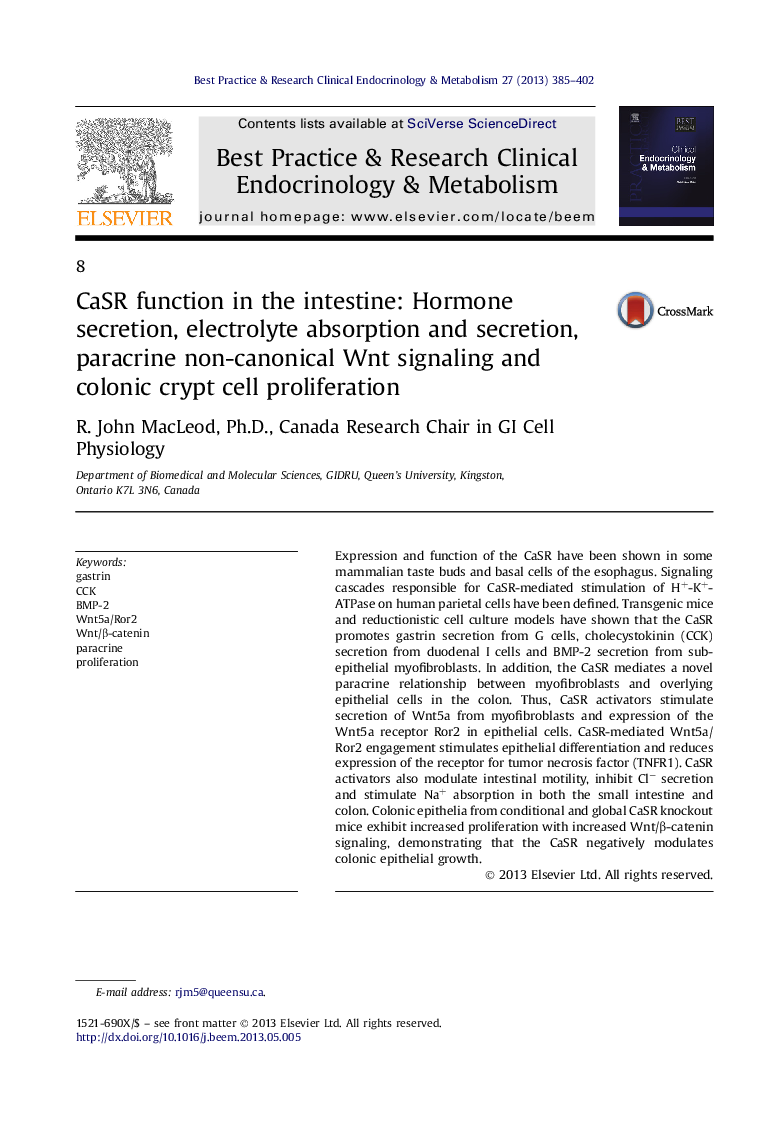| Article ID | Journal | Published Year | Pages | File Type |
|---|---|---|---|---|
| 2791754 | Best Practice & Research Clinical Endocrinology & Metabolism | 2013 | 18 Pages |
Expression and function of the CaSR have been shown in some mammalian taste buds and basal cells of the esophagus. Signaling cascades responsible for CaSR-mediated stimulation of H+-K+-ATPase on human parietal cells have been defined. Transgenic mice and reductionistic cell culture models have shown that the CaSR promotes gastrin secretion from G cells, cholecystokinin (CCK) secretion from duodenal I cells and BMP-2 secretion from sub-epithelial myofibroblasts. In addition, the CaSR mediates a novel paracrine relationship between myofibroblasts and overlying epithelial cells in the colon. Thus, CaSR activators stimulate secretion of Wnt5a from myofibroblasts and expression of the Wnt5a receptor Ror2 in epithelial cells. CaSR-mediated Wnt5a/Ror2 engagement stimulates epithelial differentiation and reduces expression of the receptor for tumor necrosis factor (TNFR1). CaSR activators also modulate intestinal motility, inhibit Cl− secretion and stimulate Na+ absorption in both the small intestine and colon. Colonic epithelia from conditional and global CaSR knockout mice exhibit increased proliferation with increased Wnt/β-catenin signaling, demonstrating that the CaSR negatively modulates colonic epithelial growth.
